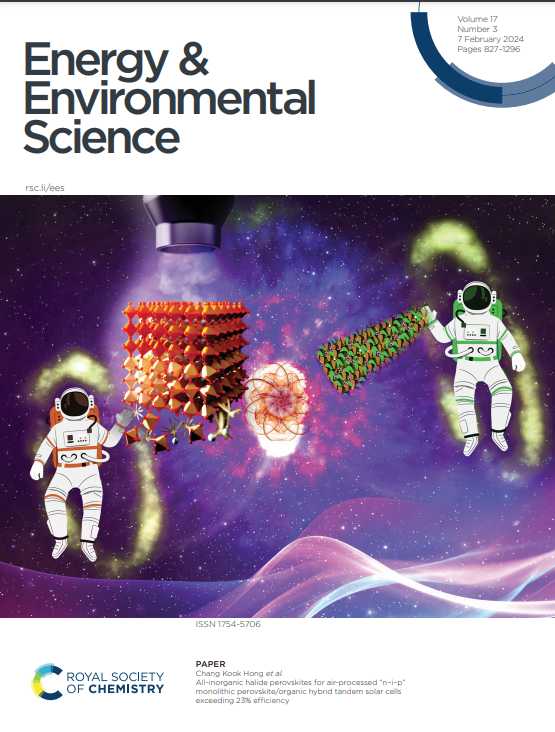Fewer temperature ties: scalable integration and broad selection of phase change materials for both heating and cooling
IF 32.4
1区 材料科学
Q1 CHEMISTRY, MULTIDISCIPLINARY
引用次数: 0
Abstract
The change of seasons necessitates alternate heating and cooling systems, which are indispensable for nearly a third of the global population. Integrating latent thermal energy storage (LTES) and heat pumps (HPs) is gaining attraction within the context of renewable energy strategies. However, fulfilling both heating and cooling requirements often requires the combined utilization of several tailored storage units, potentially escalating financial burdens and materials customization challenges related to scalability. Here, an intermediate latent thermal storage solution for dual-season usage is proposed. Combined with a double-effect quasi-two-stage heat pump, wide-temperature-range phase change materials serve as both heat and cold storage. Targeting global areas with seasonal heating and cooling demands, preferred materials are selected from 90 PCMs for 51 countries/regions and 95 subnational areas. Through high-throughput screening, materials exhibiting phase change temperatures between 10.5-22℃ are pinpointed. In Arkansas, Beijing, Minnesota, and Shanghai, significant enhancement in demand-oriented energy supply strategies is noted through deploying this system. The annual coefficient of performance enhancement yields an increment of 11.73% to 21.99%, compared to non-integrated heat pumps, and up to 51.31% versus separate heat and cold storage systems. Significantly, this integrated system overcomes cost barriers while minimizing land occupation, and exhibits great resilience amidst global climate change. These findings exemplify its scalable adaptability and potential in global areas, unveiling a global seasonal heating and cooling strategy for the first time and offering insights into alleviating global heating and cooling poverty.求助全文
约1分钟内获得全文
求助全文
来源期刊

Energy & Environmental Science
化学-工程:化工
CiteScore
50.50
自引率
2.20%
发文量
349
审稿时长
2.2 months
期刊介绍:
Energy & Environmental Science, a peer-reviewed scientific journal, publishes original research and review articles covering interdisciplinary topics in the (bio)chemical and (bio)physical sciences, as well as chemical engineering disciplines. Published monthly by the Royal Society of Chemistry (RSC), a not-for-profit publisher, Energy & Environmental Science is recognized as a leading journal. It boasts an impressive impact factor of 8.500 as of 2009, ranking 8th among 140 journals in the category "Chemistry, Multidisciplinary," second among 71 journals in "Energy & Fuels," second among 128 journals in "Engineering, Chemical," and first among 181 scientific journals in "Environmental Sciences."
Energy & Environmental Science publishes various types of articles, including Research Papers (original scientific work), Review Articles, Perspectives, and Minireviews (feature review-type articles of broad interest), Communications (original scientific work of an urgent nature), Opinions (personal, often speculative viewpoints or hypotheses on current topics), and Analysis Articles (in-depth examination of energy-related issues).
 求助内容:
求助内容: 应助结果提醒方式:
应助结果提醒方式:


